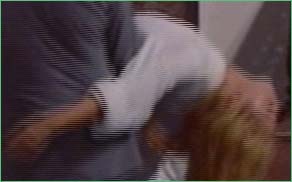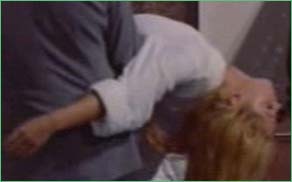Video Capture 102 - IVTC using TMPEGEncoder
Some Basics:
- IVTC or Inverse Telecine is the process of converting 29.976fps Interlaced video into a 23.976 Progressive video.
- A field is a part of a frame. A frame is split into two fields. One field is all the even row numbers and the other field is all the odd row numbers, thus the two fields are interlaced to form one frame.
- NTSC is the TV broadcast system used mainly in the United States, Canada and Japan.
- Not all NTSC broadcast can be IVTCed, IVTC can only be done if the source was originally shot on 24fps film.
- This tutorial assumes basic knowledge of VirtualDub and Video processing and computers in general.
When movie is shot on FILM, it is shot at 24fps. To display this same movie on an NTSC broadcast system, it must be first converted to 29.976. This is done by adding duplicated fields. So every 4 frame block is converted to 5 frames by adding 2 additional fields, and thus 24fps turns to 30fps. This process is called Telecine or 3:2 Pulldown.
The problem is that the computer monitor wasn't designed to display an interlaced signal, so when we capture video to a computer we get a combing effect on motion within the video. The solution is to reverse the Telecine process by removing the redundant fields and reconstructing the original frame rate.
This is, of course, easier said than done. Due to the lossy compression and noise generated during the Digital/Analog conversion (if you used an analog capture card), the fields are no longer 100% identical. Not to mention frames that are comprised of a rather blend signal (like a screen fading to black).
This makes finding the correct fields to discard even harder. There are several filters that attempt to IVTC an interlaced NTSC source. Some are better than others, but to date, none are perfect.
In this tutorial I will try to explain the most automated method of doing IVTC and 2-Pass DivX v4 video encoding for the best possible results. Note that it isn't perfect, there may still be a bit of staggering during scene changes, but it will still look considerably better than DeInterlacing, and the resulting file will be smaller.
Sample:

|

|
As you can see, the interlacing is completely gone without any of the ghosting or artifacting associated with standard DeInterlacing.
Part 1 - The Software:
This tutorial uses the following software:
- VirtualDub - https://www.virtualdub.org.
- TMPGEnc - https://www.tmpgenc.com.
- DivX v4 Codec - https://www.divx.com.
VirtualDub is a freeware video editor which is quite useful. In this tutorial it will be used for cutting out unused frames (such as commercials) and for frame serving the remaining video to TMPGEnc.
Enabling the Frame Server:
If this is the first time you ever frame served using VirtualDub, then you need to make sure that the frame server is enabled. You do that by running the "AUXSETUP.EXE" file that came within the VirtualDub archive. Once the dialog opens, select "Install Handler".
Cutting undesired frames:
To cut undesired frames from the video using VirtualDub, seek to the first frame you want to cut and then press the Mark-In button (This is the button that looks like a small black triangle with a line striking out from it's right side). Go to the last frame you want to cut and press the Mark-Out button (This is the button that looks like a black triangle with a line striking out from it's left side). Once pressed, part of the time-line representing the selected frame-span should be highlighted. Pressing the "Delete" keyboard button will delete the selected area.
Saving the processing settings:
It is wise to save the VirtualDub processing settings before starting the actual Frame Server. You never know what may happen, it's possible that the process will terminate in some way, and you'll want to make sure you have the same source ready for frame serving. In order to save the processing settings, select "File > Save Processing Setting", pick a name that suits the current project and press the "Save" button. If for any reason you need to restart VirtualDub, you can now load the settings back and resume.
The Frame Server:
To activate the VirtualDub frame server, select "File > Start frame server". You will be prompted for a frame server name, you can leave it at the default setting. Next you will be prompted for an AVI Signpost (".VDR" extension) file. Enter any valid file name, just make sure you remember the name.
This completes the VirtualDub portion of the IVTC process.
| NEXT |